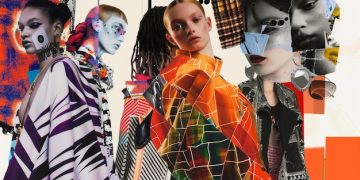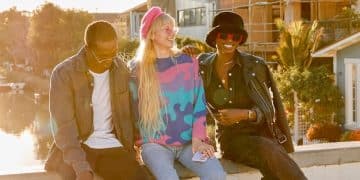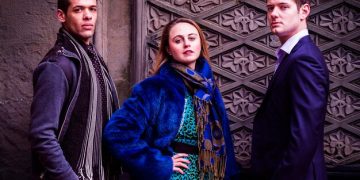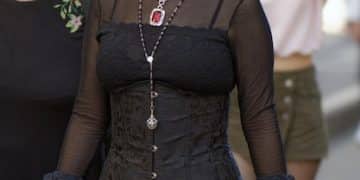Goth fashion evolution: 7 key US trends for 2025
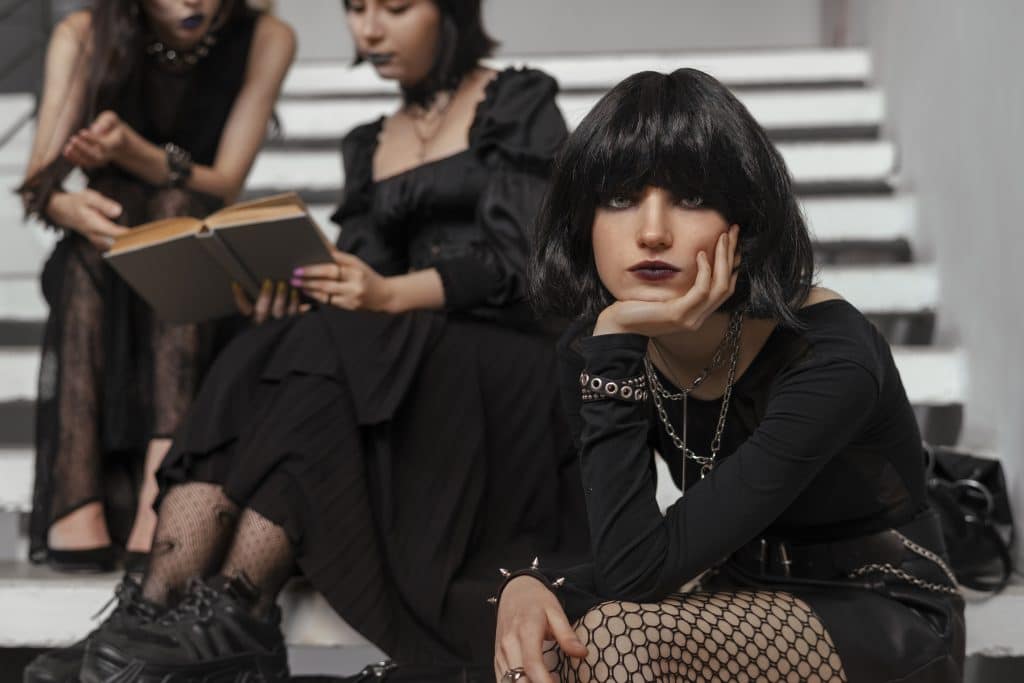
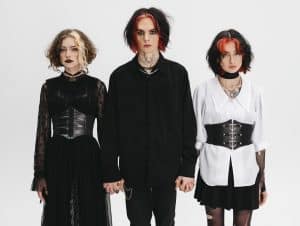
In the ever-shifting landscape of alternative style, the Goth fashion evolution reflects how history, technology, and cultural expression continuously redefine what it means to dress in darkness.
What started as a niche subculture in the late 1970s has transformed into a global phenomenon that reinvents itself with every new generation.
Today, gothic aesthetics are not only about black clothing and dramatic makeup. They are about individual identity, inclusivity, sustainability, and innovation.
The year 2025 brings an exciting fusion of tradition and modernity, where old silhouettes meet futuristic fabrics, and spiritual symbolism merges with corporate tailoring.
Let’s dive into the seven defining directions shaping Goth fashion in the United States this year.
The resurgence of romantic goth: a delicate darkness
The Romantic Goth aesthetic, with its deep roots in 18th and 19th-century Victorian and Romantic literary movements, is experiencing a profound resurgence.
This isn’t merely a nostalgic rehash but a thoughtful reinterpretation that blends historical elegance with modern sensibilities.
The emphasis remains on dramatic silhouettes, luxurious fabrics, and an air of melancholic beauty, yet it’s infused with new perspectives that prioritize wearability and contemporary relevance.
Inspired by figures like Lord Byron and Mary Shelley, Romantic Goth in 2025 moves beyond simple period costuming.
Designers and enthusiasts are focusing on the evocative power of these historical eras, translating their core elements into pieces that resonate with today’s alternative scene.
Think less strict historical reenactment and more an appreciation for the emotional depth and artistic flair inherent in the aesthetic.
Key elements of modern romantic goth
- Velvet and lace: These classic textures remain central, but are now often blended with technical fabrics for comfort and drape. Anticipate rich, deep velvets in new hues and intricate lace patterns applied in unexpected ways.
- Ruffles and dramatic sleeves: Voluminous sleeves, high necklines, and cascading ruffles create ethereal silhouettes. The emphasis is on fluid movement and a sense of theatricality, often seen in blouses, dresses, and capes.
- Victorian collars and cuffs: Detachable elements like elaborate collars and cuffs offer versatility, allowing wearers to inject Romantic Goth touches into more contemporary outfits.
The contemporary Romantic Goth is about curating a look that feels both timeless and deeply personal.
It’s a style that speaks to a longing for beauty, mystery, and a connection to a bygone era, yet it does so with a conscious awareness of current fashion discourses and sustainable practices.
The delicate balance between historical accuracy and modern interpretation defines its allure, making it a powerful statement within the alternative community.
Cyber-goth evolution: digital dreams and industrial edges
Cyber-Goth, a subgenre that emerged in the late 1990s as a fusion of industrial music, rave culture, and gothic aesthetics, continues its fascinating evolution.
Far from being a static style, Cyber-Goth in 2025 is increasingly embracing digital realms and advanced material science, moving beyond its traditional neon-and-dreadlocks stereotype to incorporate more sophisticated technological and textural elements.
This iteration of Cyber-Goth integrates smart fabrics, reflective materials, and even subtle embedded lighting. The aesthetic is still boldly artificial and futuristic, but there’s a growing emphasis on practical utility and a more refined, sleek appearance.
Designers are exploring how human-computer interaction can subtly influence garment design, incorporating modularity and adaptability into clothing.
Innovations in cyber-goth materials and design
- Techno-fabrics: Expect to see more garments made from ripstop nylon, PVC, and innovative synthetics that offer unique textures and performance characteristics, some with integrated reflective or glow-in-the-dark properties.
- Utility and modularity: Functional pockets, detachable components, and adjustable straps are becoming more prominent, reflecting a “tech-wear” sensibility within the Cyber-Goth sphere.
- Digital prints and patterns: Complex, abstract digital prints that mimic circuit boards, glitch art, or fractal patterns are replacing simpler geometric designs, adding depth and visual interest.
The visual language of Cyber-Goth is expanding beyond saturated neon colors to include more nuanced metallic shades, holographic finishes, and even muted tones that come alive under specific lighting conditions.
This evolution shows the style’s maturity, keeping it cutting-edge while appealing to a wider alternative audience that values its futuristic ethos without the excess of earlier forms.
It remains a subculture focused on the future, both aesthetically and technologically.
Occult and witchy goth: spiritual expressions in fabric
The Occult and Witchy Goth aesthetic has always been deeply intertwined with spirituality, mysticism, and esoteric symbolism.
As society increasingly seeks deeper meaning and connection beyond the material, this particular facet of goth fashion is flourishing, providing a visual language for spiritual exploration and personal empowerment.
In 2025, this trend is characterized by a sophisticated blend of natural elements, ancient symbols, and ritualistic silhouettes, creating garments that are not just clothes but wearable talismans.
Unlike some other goth styles that lean into overt theatricality, Witchy Goth often prioritizes a more subtle, earthy, and profound connection to the natural world and hidden knowledge.
Fabrics are often flowing and organic, and designs incorporate natural motifs alongside mystical iconography.
The rise of modern paganism and a renewed interest in witchcraft contribute significantly to its growing prominence within the alternative scene.
Defining features of witchy goth in 2025
- Symbolic jewelry and accessories: Pentagrams, crescent moons, celestial bodies, and other runic symbols are central. These are often rendered in aged silver, bronze, or natural materials like bone and wood, serving as powerful focal points.
- Earthy tones and natural fabrics: While black remains dominant, expect to see an increased integration of deep forest greens, earthy browns, midnight blues, and rich plums. Materials like linen, cotton, and hemp are gaining popularity alongside silk and velvet.
- Flowing silhouettes and layered textures: Capes, cloaks, and long, asymmetrical dresses create a sense of mystery and movement, evoking images of woodland mysticism. Layering different textures adds depth and dimension to the overall ensemble.
This aesthetic extends beyond clothing into home decor, artistic expression, and personal lifestyle choices, reinforcing its holistic approach.
It speaks to individuals who view their personal style as an extension of their spiritual journey, using fashion as a means of expressing their connection to the unseen, the ancient, and the powerful forces of nature.
The result is a style that feels both ancient and refreshingly modern, deeply personal and universally resonant.
Corporate goth and dark academia crossover: intellectual darkness
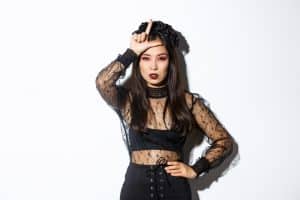
The Corporate Goth and Dark Academia crossover represents a fascinating synthesis of intellectual rigor and gothic sensibility.
This trend, gaining significant traction in 2025, appeals to an demographic that finds beauty in structure, knowledge, and historical depth, while still embracing the melancholic and sophisticated undertones of goth.
It’s a departure from the more overtly rebellious or flamboyant aspects of goth, offering a refined, mature, and intellectually charged aesthetic.
This style emphasizes tailored garments, classic silhouettes, and a muted, somber color palette. The blend is seamless:
Dark Academia brings the sartorial cues of old university life, tweed, blazers, button-downs, while Corporate Goth injects the dramatic flair of dark romanticism and structured minimalism.
The result is an aesthetic that is perfectly suited for professional or academic environments, allowing individuals to express their alternative inclinations without sacrificing formality or sophistication.
Elements of the corporate goth and dark academia blend
- Tailored silhouettes: Sharp blazers, crisp button-down shirts (often in black, grey, or dark jewel tones), and structured trousers or skirts form the backbone of this look.
- Luxurious, muted fabrics: Wool, tweed, velvet, and quality cotton are favored, often in deep charcoals, olives, navy, and of course, black. The emphasis is on texture and drape rather than overt patterns.
- Intellectual accessories: Vintage-inspired eyewear, leather satchels, antique-style watches, and subtle, often symbolic, jewelry further enhance the scholarly and refined image. Think less overt spikes and more understated elegance.
The appeal of this crossover lies in its ability to fuse seemingly disparate worlds: the strictures of professional attire with the freedom of alternative expression.
It creates a powerful statement of intellectualism and understated rebellion, proving that goth can exist elegantly within traditional societal frameworks.
It’s a celebration of knowledge, introspection, and a quiet, profound darkness that resonates with a growing number of individuals valuing both substance and style.
Peruvian goth influence: ancestral darkness reimagined
A burgeoning and particularly intriguing trend in 2025 is the influence of Peruvian aesthetics on goth fashion.
This fusion introduces rich textures, vibrant yet often somber color palettes, and ancient symbolic motifs from the Andean regions into the typically Western-centric gothic framework.
It represents a significant step towards a more globally informed and diverse goth scene, moving beyond conventional Euro-centric interpretations.
This trend is not about cultural appropriation but about a respectful and artistic appreciation of Peruvian textile traditions, iconography, and historical narratives.
Designers and enthusiasts are drawing inspiration from pre-Columbian art, traditional Peruvian textiles, and the country’s unique blend of indigenous and colonial heritage.
The result is a goth aesthetic that feels deeply rooted, spiritually charged, and visually distinct.
Key characteristics of Peruvian-influenced goth
- Textural richness: Emphasis on woven textiles, alpaca wool, and embroidered details that mimic traditional Peruvian craftsmanship. The tactile quality of garments becomes paramount.
- Earth-toned accents: While black remains dominant, it’s often complemented by deep reds, faded blues, ochre, and natural browns and creams, reminiscent of Andean landscapes and ancient dyes.
- Geometric and symbolic patterns: Patterns inspired by Incan and pre-Incan motifs, particularly those related to nature, cosmology, and spiritual practices, are subtly integrated into designs, either through fabric prints, embroidery, or accessories.
The allure of Peruvian-influenced goth lies in its unique blend of ancient mystique and contemporary edge. It offers a fresh perspective on darkness, connecting it to ancestral wisdom and the powerful narratives of a rich cultural past.
This trend redefines goth fashion, making it more inclusive and globally conscious while allowing designers to innovate with new materials and narratives that respect heritage and shape the future.
DIY and sustainable goth: conscious creation
In an era of increasing environmental awareness and a critique of fast fashion, the DIY (Do It Yourself) and sustainable goth movement is gaining significant momentum in 2025.
This trend reflects a broader societal shift towards ethical consumption and personalized expression, translating into a goth aesthetic that is both deeply personal and environmentally conscious.
It’s a rebellion against mass-produced clothing, prioritizing craftsmanship, longevity, and reduced environmental impact.
This approach involves upcycling existing garments, repurposing materials, hand-making accessories, and sourcing ethically produced fabrics.
The emphasis is on unique pieces that tell a story, reflecting the wearer’s individuality and commitment to sustainable living. It champions slow fashion principles within the alternative community, allowing for creativity without compromising values.
Practices defining DIY and sustainable goth
- Upcycling and repurposing: Transforming old clothing into new gothic pieces through dyeing, distressing, adding patches, or reconstructing silhouettes. Vintage finds are given new life with a dark twist.
- Ethical material sourcing: Prioritizing organic cotton, recycled polyester, hemp, and cruelty-free alternatives to leather and fur. Support for small, independent artisans who practice ethical production is also key.
- Handicraft and customization: Embracing skills like sewing, knitting, embroidery, and jewelry making to create truly unique accessories and garments. This often involves intricate detailing and personalization.
The DIY and sustainable goth movement empowers individuals to be creators rather than just consumers. It reinforces the ethos of individuality and anti-conformity that has always been central to the goth subculture, but with a modern, responsible twist.
It’s about building a wardrobe that is both aesthetically pleasing and aligned with ethical principles, demonstrating that distinctive style doesn’t have to come at the expense of the planet or human rights.
This conscious creation adds a layer of authenticity and depth to the alternative fashion landscape.
Androgynous and gender-fluid goth: blurring boundaries
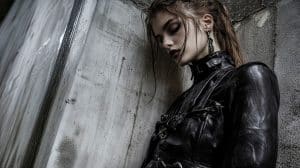
The movement towards androgynous and gender-fluid expression is profoundly reshaping goth fashion in 2025.
Mirroring broader societal conversations around gender identity, this trend sees a dismantling of traditional binary distinctions in clothing, embracing silhouettes, fabrics, and adornments that defy conventional male and female categories.
It’s a powerful statement of self-determination and fluidity within the alternative scene.
This iteration of goth emphasizes versatility and individual interpretation, allowing wearers to choose pieces based on personal aesthetic preference rather than prescribed gender norms.
The focus shifts to the dramatic interplay of light and shadow, texture, and form, rather than on highlighting specific gendered attributes.
This creates a broader, more inclusive canvas for gothic expression, making the subculture more welcoming than ever.
Characteristics of gender-fluid goth aesthetics
- Shared wardrobes: Clothes are increasingly designed to be worn by anyone, focusing on universal appeal. This includes structured blazers, flowing skirts, and oversized knitwear that transcend traditional sizing.
- Mixing historically gendered elements: Integrating elements historically associated with one gender into outfits for another, such as men wearing lace or skirts, or women adopting sharp tailoring and oversized, traditionally masculine outerwear.
- Minimalist and abstract forms: A preference for clean lines, abstract shapes, and less overtly sexualized or gender-specific clothing. The focus is on the artistic integrity of the garment itself.
The androgynous and gender-fluid goth trend emphasizes that personal style is an extension of identity and self-discovery, unconstrained by conventional labels.
It celebrates the nuanced complexities of human expression, promoting a vision of goth that is ever-evolving, inclusive, and deeply personal.
It’s about finding freedom in fashion, constructing an appearance that feels authentically ‘you,’ regardless of traditional boundaries.
This boundary-breaking approach ensures that goth fashion remains innovative and relevant, echoing the fluidity of identity itself.
| Key Trend | Brief Description |
|---|---|
| 🖤 Romantic Revival | Reinterpretation of Victorian elegance with modern fluidity & luxurious fabrics. |
| 🌐 Cyber-Goth Tech | Integration of smart fabrics and sleek, functional designs for a futuristic look. |
| 🔮 Witchy Elements | Mystical symbols, natural textures, and a connection to ancient spiritual practices. |
| 👕 Sustainable & DIY | Emphasis on upcycling, ethical materials, and handcrafted pieces. |
Frequently asked questions about goth fashion trends
The evolution refers to how classic gothic aesthetics adapt to contemporary societal changes, technological advancements, and a growing emphasis on individuality. It’s about new materials, global influences, and more fluid interpretations of style, moving beyond traditional boundaries to create fresh expressions while honoring core tenets.
Sustainability is increasingly central, with a focus on DIY techniques, upcycling existing garments, and using ethically sourced materials. This approach allows goth enthusiasts to express their individuality and anti-consumerist sentiments while reducing environmental impact, creating unique, long-lasting pieces.
No, gender norms are increasingly being challenged and blurred. The trend is moving towards androgynous and gender-fluid styles, where clothing choices are dictated by personal aesthetic preference rather than traditional male/female categories, fostering a more inclusive and expressive scene.
Historical influences, particularly Victorian and Romantic aesthetics, remain strong but are reinterpreted with modern twists. This isn’t about strict reenactment but about capturing the dramatic silhouettes and luxurious textures of past eras, blending them with contemporary comfort and wearability for a fresh take.
Global cultures are introducing diverse elements into goth fashion, with trends like the Peruvian Goth influence bringing new textures, symbols, and color palettes. This expansion enriches the aesthetic, pushing it beyond its Western origins to incorporate a wider array of cultural narratives and artistic expressions.
Conclusion: The Future of Goth Fashion in 2025
The Goth fashion evolution in 2025 demonstrates that this style has transcended its origins to become a global cultural force.
What began as a countercultural statement is now a diverse spectrum of aesthetics that embraces both history and innovation.
From the romantic refinement of Victorian-inspired silhouettes to the futuristic edge of Cyber-Goth, each expression reveals how Goth fashion adapts to changing times while preserving its spirit of rebellion.
Another defining aspect of 2025 is the conscious shift toward sustainability and inclusivity.
The rise of DIY practices, ethical sourcing, and upcycling aligns goth culture with wider ecological concerns, while gender-fluid and androgynous designs reinforce its role as a safe space for identity exploration.
This makes Goth fashion not only a style but also a statement of values in an era that demands authenticity.
For readers who want to dive deeper into the history of Gothic clothing, Attitude Clothing offers a fascinating exploration of its evolution, while Psylo’s guide highlights the cultural shifts that shaped its identity.
By understanding both its roots and its modern reinventions, we see that Goth fashion is more than clothing, it is a living philosophy, a visual language of individuality that will continue to inspire and redefine itself for generations to come.
Liked the article?
